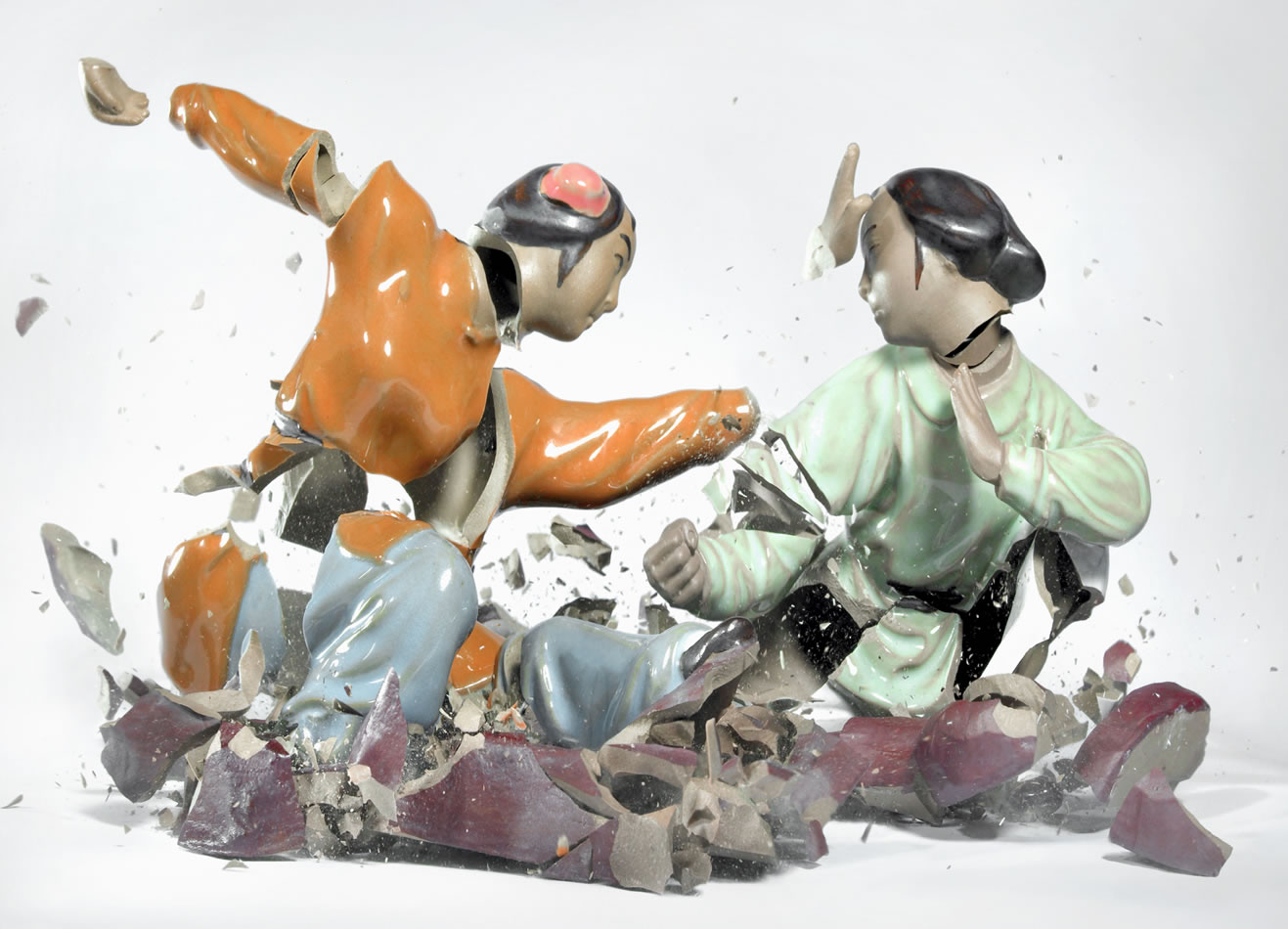
Chicago based artist Doug Fogelson creates mesmerizing photographic images of natural specimins, previously featured on our blog. His series titled “Broken Cabinet” is so named for the “cabinet of curiosities” that he collects, and then photographs through a process called photogramming. Photograms, for those who aren’t familiar, are pictures produced with photographic materials, such as light-sensitive paper, but without a camera. Fogelson recently expanded on the series to include a display of his collection on view at Linda Warren Projects in Chicago. The countless amounts of shark teeth, fish, insects, feathers, and other creatures and objects are only faintly recognizable in his pictures. With this new addition, Fogelson brings an element of familiarity to the once living subjects of his vibrantly colored works. The choice of the organisms that he portrays is not random. Each is near extinction, and by continuing to call attention to them, Fogelson hopes he can inspire his audience to consider our impact on the environment.
“Broken Cabinet” by Doug Fogelson is now on view at Linda Warren Projects through November 7th.

















 Dutch artist
Dutch artist  South African designer
South African designer  Photographing porcelain figures the moment they hit the ground, Martin Klimas injects a sense of motion and chaos into an otherwise stationary object. The artist has taken a similar approach to photographing a moment of impact with bullets zipping through vases. For the figures, Klimas says that “the porcelain statuette bursting into pieces isn't what really captures the attention; the fascination lies in the genesis of a dynamic figure that seems to stop/pause the time and make time visible itself.”
Photographing porcelain figures the moment they hit the ground, Martin Klimas injects a sense of motion and chaos into an otherwise stationary object. The artist has taken a similar approach to photographing a moment of impact with bullets zipping through vases. For the figures, Klimas says that “the porcelain statuette bursting into pieces isn't what really captures the attention; the fascination lies in the genesis of a dynamic figure that seems to stop/pause the time and make time visible itself.”